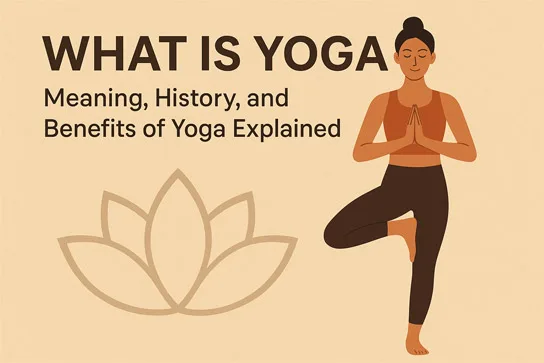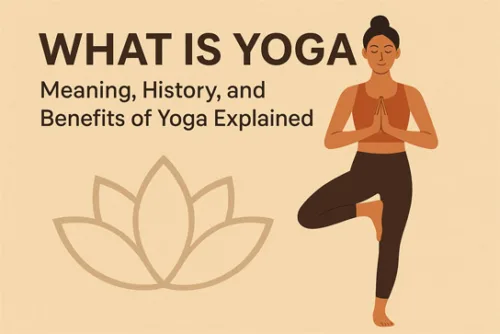
Everybody wants to know what is yoga ? Yoga has been an integral part of the Indian culture since ancient times. Yoga is so much all-pervading that no aspect of our life, be it materialistic or non-materialistic, remains untouched by it. Yoga is the sacred path leading to self-discipline, self-knowledge and self- perception. Our external and internal beauty is illumined by it. When yoga cures psychosomatic diseases and disorders, it functions ‘not as a symptomatic treatment but as a systemic and scientific treatment’, because the regular practice of yoga not only controls the diseases but also prevents them. Yoga is a philosophy of self-dependence regarding health, with no negative effects and giving one hundred per cent benefit.
Yoga makes our social and spiritual life simple, natural, sincere and sublime, and makes us an indefatigable adventurer with a strong will- power on the road to accomplishing our noble resolves. Thus, in this form, yoga is an ascetic discipline of enriching our physical and emotional personality and entity and of developing from a pygmy into a colossus. Stated simply, ‘yoga is on one hand a medical system, and on the other an excellent regimen of life.’
We can definitely say that if we have to define the whole Indian religion, philosophy, various branches of knowledge and science, spiritualism, culture, civilization, and its numerous esoteric and metaphysical lores by one word – that one word is ‘YOGA’.
what is yoga & Types of Yoga
The comprehensive and elaborate form of yoga has given birth to its many types. Dattatreya Yogaśästra and Yogaraja Upanisad recognize four types of yoga: Mantrayoga, Layayoga, Hathayoga and Rajayoga. In Yoga Tattvopanisad, the characteristics of these four types been described thus:
1.MANTRAYOGA: By reciting the Mätṛkäriyukta mantra for 12 years methodically, a seeker attains divine powers like apriya, etc.
2. LAYAYOGA: Meditating upon God while doing one’s daily activities is called Layayoga.
3.HATHAYOGA: Purging the body and making the mind one-pointed through the practice of various mudras, āsanas, pranayamas and bandhas is called Hathayoga.
4. RĀJAYOGA: Revelation of the Luminous Soul by purifying the mind through the practice of abstinences (yamas) and observances (niyamas) is called Rajayoga. The word ‘rajayoga’ is derived thus: ‘Vraj diptau, ‘raja’ means ‘luminous’, ‘lustrous’ and ‘yoga’ means ‘samādhi’ or ‘realization’.
Dhyanayoga, Samkhyayoga and Karmayoga have been elaborated upon in Gītā. In the fifth chapter of Gītā, Karmayoga has been considered superior to Samnyāsayoga.
Brief Background and introductions of YOGA
The word ‘yoga’ has been used abundantly in the literature of Vedic period. The first use of the word ‘yoga‘ is found in Rgveda. The artifacts, coins and figurines recovered from the excavations of Indus Valley Civilization offer an evidence of the knowledge of yoga at one level or the other.
A few classical texts refer to Hiranyagarbha as the first exponent of yoga. In certain other texts (e.g. Tantragrantha), Lord Siva is believed to be the first yogi. The Bhagavadgītā says (4.1) that the knowledge of yoga was first of all revealed by Lord Śrīkṛṣṇa to Sürya (Sun).
YOGASUTRA is the first text on yoga with a corollary of sutras, containing 195 sutras. It is believed to have been authored by Maharși Patanjali around 200 B.C. Among the six philosophical systems (ŞADDARSANA), YOGADARSANA holds a prominent place. In the texts of Hathayoga tradition (e.g., HATHAYOGA- PRADIPIKA, GHERANDASAMHITA, SIVASAMHITA, etc.), āsanas, prāṇāyāmas, mudras, bandhas, etc. have been described in detail.







